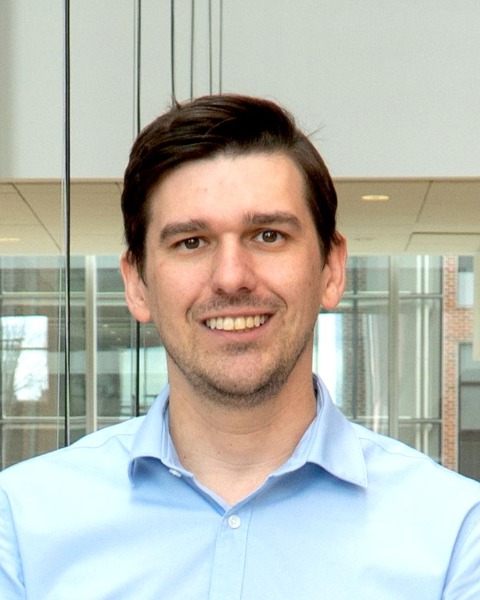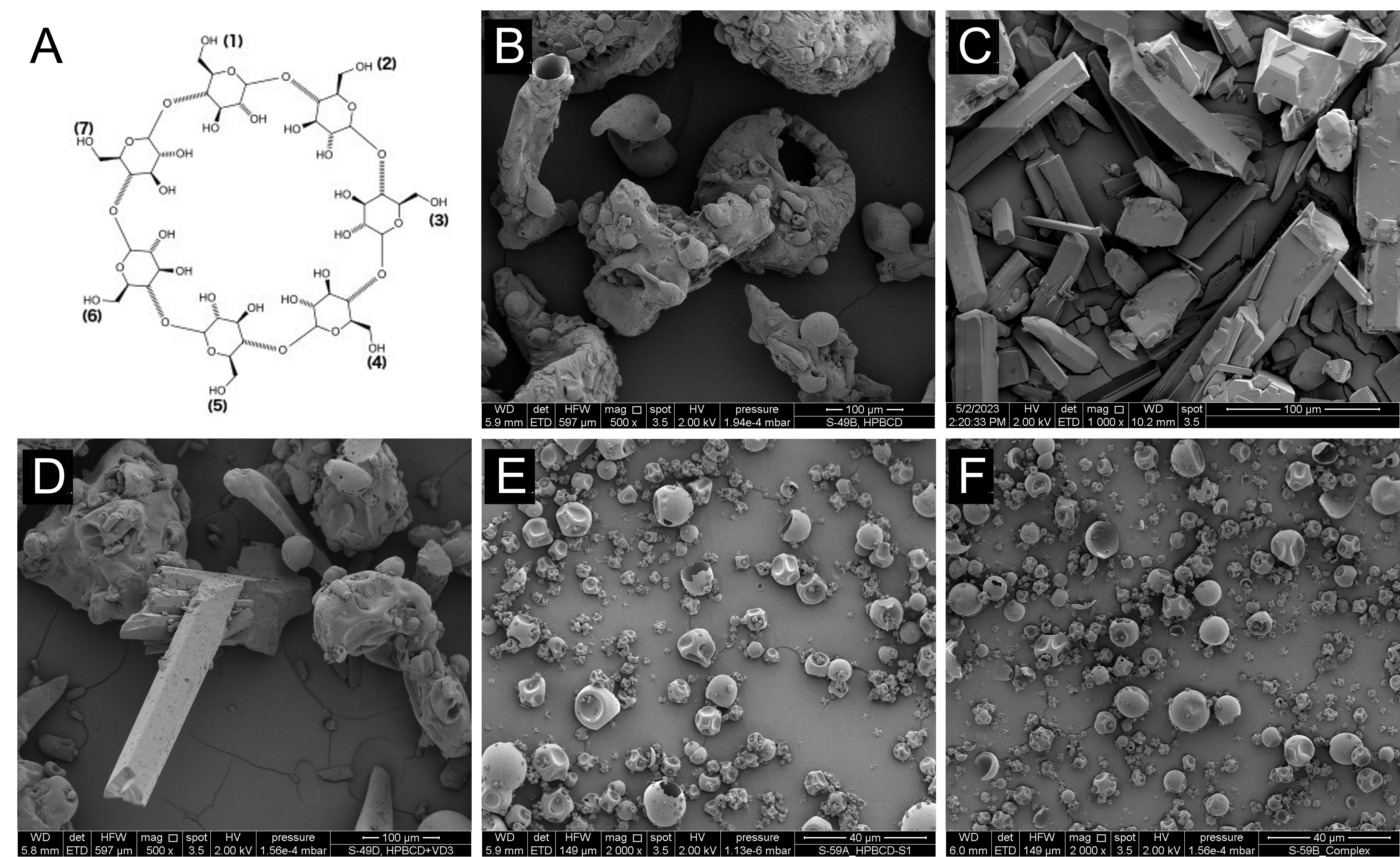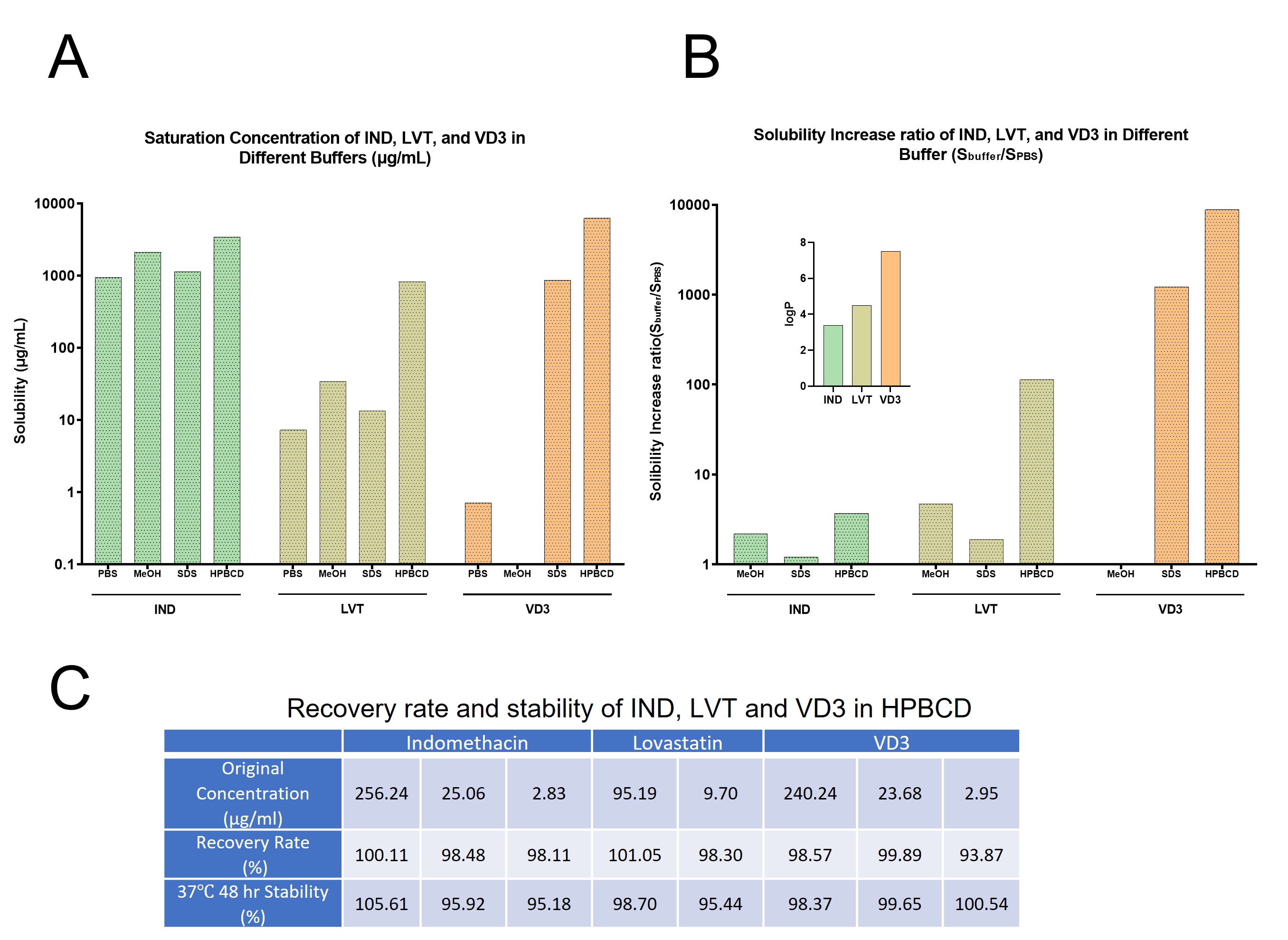Formulation and Delivery - Chemical
Category: Poster Abstract
(M1130-11-73) Hydroxypropyl-β-cyclodextrin (HPBCD) in Insoluble Drug-Loaded Nanoparticles Dissolution Studying: A New Approach to Overcoming Sink Limitations
.jpg)
Yihan Wang, MS
research assistant
University of Maryland Baltimore
Baltimore, Maryland, United States.jpg)
Yihan Wang, MS
research assistant
University of Maryland Baltimore
Baltimore, Maryland, United States- FW
Fang Wang, Ph.D. (she/her/hers)
University of Maryland
Baltimore, Maryland, United States - IA
Ibrahim Ahmed, Ph.D.
University of Maryland Baltimore
Baltimore, Maryland, United States - DY
Dongyue Yu, Ph.D.
University of Maryland Baltimore
Baltimore, Maryland, United States 
Ryan Pearson, Ph.D.
Assistant Professor
University of Maryland Baltimore
Baltimore, Maryland, United States
Iram Maqsood, PhD (she/her/hers)
PostDoc
University of Maryland Baltimore
Baltimore, Maryland, United States- XL
Xun Li, Sr., Ph.D. (he/him/his)
University of Maryland Baltimore
Baltimore, Maryland, United States - JS
Jun Shang, MS
University of Maryland Baltimore
Baltimore, Maryland, United States - SH
Stephen Hoag, Ph.D. (he/him/his)
University of Maryland
Baltimore, Maryland, United States
Presenting Author(s)
Main Author(s)
Co-Author(s)
Purpose: The modern drug discovery processes are uncovering an increasing number of BCS Class II compounds (low solubility, high permeability), which comprise a significant portion (50%-60%) of the pharmaceutical pipeline.[1] For such compounds, dissolution is often the rate-limiting step to their absorption, and achieving adequate dissolution in aqueous solutions which mimic the physiological condition can be challenging during the dissolution study. Maintaining sink conditions is critical for dissolution characterization. Otherwise, A non-sink condition may provide an inaccurate characterization of the drug's dissolution behavior. To overcome this challenge when studying BCS Class II drug dissolution, alternative strategies such as increasing the volume of the dissolution medium, using flow-through apparatus, addition of cosolvents, surfactants, or using biphasic media can be employed. However, these methods have disadvantages, e.g., a large volume of dissolution medium can make detection more difficult. Hydroxypropyl-beta-cyclodextrin (HPBCD) is a modified form of beta-cyclodextrin (β-CD) with a molar substitution of 0.58-0.68 (hydroxyl substituted with hydroxypropyl) that improves the solubility and stability of the cyclodextrin. Like the β-CD, HBCD is a cyclic oligosaccharide with a hydrophobic cone-shaped core that can encapsulate or complex with a wide range of guest molecules. [2] (Figure 1A). Typically, cyclodextrin is used as solubilizer, stabilizer, or taste masking agent. In our study, HPCD was used as a component of dissolution buffer to help maintain sink conditions for BCS Class Ⅱ compounds. Three BCS Class Ⅱ drugs with different solubility, Cholecalciferol (VD3, MW 384.6, LogP7.5), Lovastatin (LVT, MW 404.5, LogP4.5), and Indomethacin (IND, MW 357.8, LogP3.4) were used as model drugs. The saturation concentrations of model drugs are detected in four different dissolution media. For the dissolution studies, the model drugs were incorporated into nanoparticles (NPs) and the release behavior was evaluated in dissolution medium with or without HPBCD.
Methods: The solubility of model drugs were measured in PBS, 20% methanol in PBS, 200 mM HPBCD in PBS, and 0.1% SDS. Excess amounts of drugs were added to each solution. The saturation concentrations of 3 drugs were measured via UPLC after 3 days of shaking at room temperature. The recovery and stability of model drugs at 37℃ were measured. For the recovery study, different concentrations of drug solutions were mixed with blank NPs. After shaking, the supernatant was collected by centrifuge and measured by UPLC. For stability studies, different concentration drug solutions were kept at 37℃ for 48 hours. The oil-in-water (O/W) emulsion method was used to prepare VD3, LVT, and IND-loaded nanoparticles. The nanoparticles were dispersed in 10mL PBS, 200mM HPBCD in PBS, and placed in 50mL centrifuge tubes. The tubes were shaken at 110 rpm and 37 °C. At predetermined intervals, 1 mL of the suspension was withdrawn and replenished with fresh media. The supernatant was collected after centrifugation and analyzed by UPLC for drug release. The cumulative release rate was calculated. SPSS statistics 26 was used to fit the release model.
Results: Compared with the other three commonly used dissolution buffers, HPBCD can help the drug to obtain the best solubility. (Figure 2A) HPBCD also has the best effect in increasing solubility ratios (Sbuffer/SPBS). (Figure 2B) Both the absolute solubility of the drug in HPBCD buffer and the increased ratio relative to PBS are proportional to the logP of the drug itself. The results indicated that drugs with stronger hydrophobicity (e.g.,VD3) were preferring to remain in the hydrophobic cavity of HPBCD and form soluble complexs. (Figure 1B-F) In the recovery study and 37℃, 48 hours stability study prior to the nanoparticle release experiment, three drugs are stable in HPBCD buffer. The presence of blank nanoparticles did not interfere with the measurement of the drugs. (Figure 2C). In a subsequent nanoparticle release study, the release behavior of three drug nanoparticles in PBS and HPBCD was compared. Except IND, which has the maximum solubility and minimum LogP, that was not observed difference of its release behavior between PBS and HPBCD. (Figure 3A) The release rate of LVT and VD3 increased in HPBCD compared with PBS. (Figure 3B, 3C) IND NPs’ release curve in either PBS or HPBCD fit the First order model (R2=0.799 and 0.679 respectively); LVT NPs’ fit the Higuchi equation (R2=0.982 and 0.830 respectively); VD3 NPs’ release curve of HPBCD buffer (VD3 release was not detected in PBS) also fit the Higuchi equation (R2=0.995). HPBCD can encapsulate the drug into its hydrophobic cavity that builds a sink condition for the subsequent release process. HPBCD doesn’t influence the drug release mechanism from the view that the release model has not changed.
Conclusion: HPBCD could enhance the solubility of hydrophobic drugs significantly. This phenomenon is proportional to the drugs’ LogP value. In dissolution medium HPBCD plays a solubilizing role. The drug release mechanism is not interfered with while the sink condition was maintained.
References: 1. Ku, M.S., Use of the Biopharmaceutical Classification System in early drug development. Aaps j, 2008. 10(1): p. 208-12.
2. Wang, F., et al., Cholecalciferol complexation with hydroxypropyl-β-cyclodextrin (HPBCD) and its molecular dynamics simulation. Pharmaceutical Development and Technology, 2022. 27(4): p. 389-398.
Acknowledgements: Katya Vert, Jelena Jeremic from NoStopharm Inc., and Maryland Industrial Partnerships (MIPS) for technical assistance and financial support.
 Fig. 1: (A) 2D structure of HPBCD; (B) HPBCD; (C) VD3 crystal; (D) physical mixture of VD3 and HPBCD; (E) spray-dried HPBCD solution; (F) spray-dried VD3-HPBCD solution, VD3 was encapsulated by the HPBCD.
Fig. 1: (A) 2D structure of HPBCD; (B) HPBCD; (C) VD3 crystal; (D) physical mixture of VD3 and HPBCD; (E) spray-dried HPBCD solution; (F) spray-dried VD3-HPBCD solution, VD3 was encapsulated by the HPBCD. Figure 2. Solubility change of hydrophobic drugs in different dissolution mediums (A) Saturated concentration of IND, LVT, and VD3 in different dissolution mediums (μg/ml); (B) Solubility increase ratio of IND, LVT, and VD3 in different dissolution medium to PBS; (C) IND, LVT and VD3 recovery and stability in HPBCD solution
Figure 2. Solubility change of hydrophobic drugs in different dissolution mediums (A) Saturated concentration of IND, LVT, and VD3 in different dissolution mediums (μg/ml); (B) Solubility increase ratio of IND, LVT, and VD3 in different dissolution medium to PBS; (C) IND, LVT and VD3 recovery and stability in HPBCD solution.jpg) Figure 3. IND, LVT, and VD3 nanoparticles release curves in PBS and HPBCD. (A). IND NPs release curves fit the First order model both in PBS and HPBCD. (B) LVT NPs release curves fit the Higuchi model both in PBS and HPBCD (C) VD3 nanoparticles in HPBCD release curves fit the Higuchi model
Figure 3. IND, LVT, and VD3 nanoparticles release curves in PBS and HPBCD. (A). IND NPs release curves fit the First order model both in PBS and HPBCD. (B) LVT NPs release curves fit the Higuchi model both in PBS and HPBCD (C) VD3 nanoparticles in HPBCD release curves fit the Higuchi model